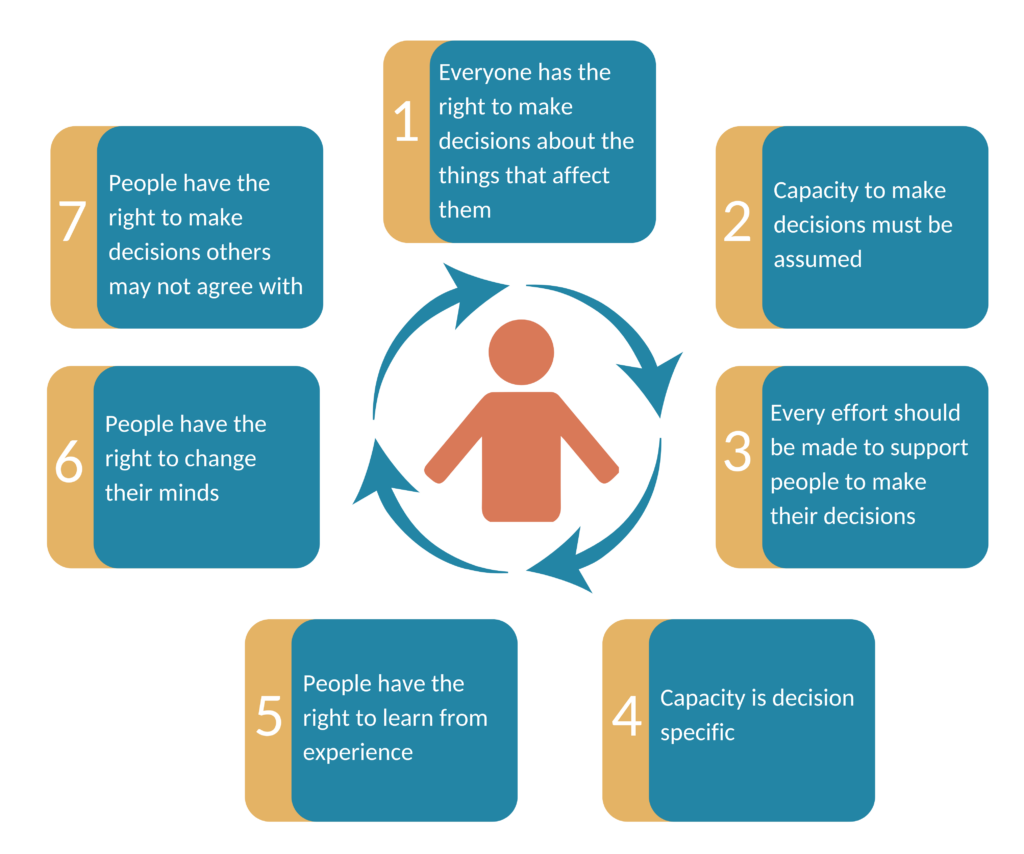
About supported decision making
Everyone has the right to participate in decisions about the things that impact them.
People of all cognitive abilities must be afforded the opportunity to indicate their wishes and preferences – to be asked. Decision makers should not simply make decisions on their own.
It needs to be a supported decision-making process.
Supported decision making steps
- What is the decision to be made? Assume the person can make decisions with assistance.
- Prepare for making the decision. Get all the information you both will need.
- Consider the best situation for making a decision. The best time for and wellness of the person.
- Communicate with the person. Involve the person and provide the information in a way they can understand to get their views. Ask questions and use what you know about the person. It might need to be a repeated conversation breaking it down into small pieces over time. Talk to other family members and friends to get their knowledge of what the person’s preferences are.
- Facilitate the decision. Provide the implications of all options, consider the balance of dignity versus risk and safety, and avoid applying your own bias. A bad decision, or one you would not make, does not mean a lack of capacity.
- Uphold the decision. Keep the person updated, and seek feedback.

Resources
The ADA Law Supported Decision Making Guide provides practical advice to support a person with decisions across key service systems such as Where to Live, Aged Care, the NDIS, Healthcare and Finances.
ADA Law supported decision making
guide
Supported decision making - A guide for people living with dementia, family members and carers
Supporting financial decisions
Get support
This page will cover the following topics
- Ask for help
- Make a referral
- Order resources
- Read advocacy stories